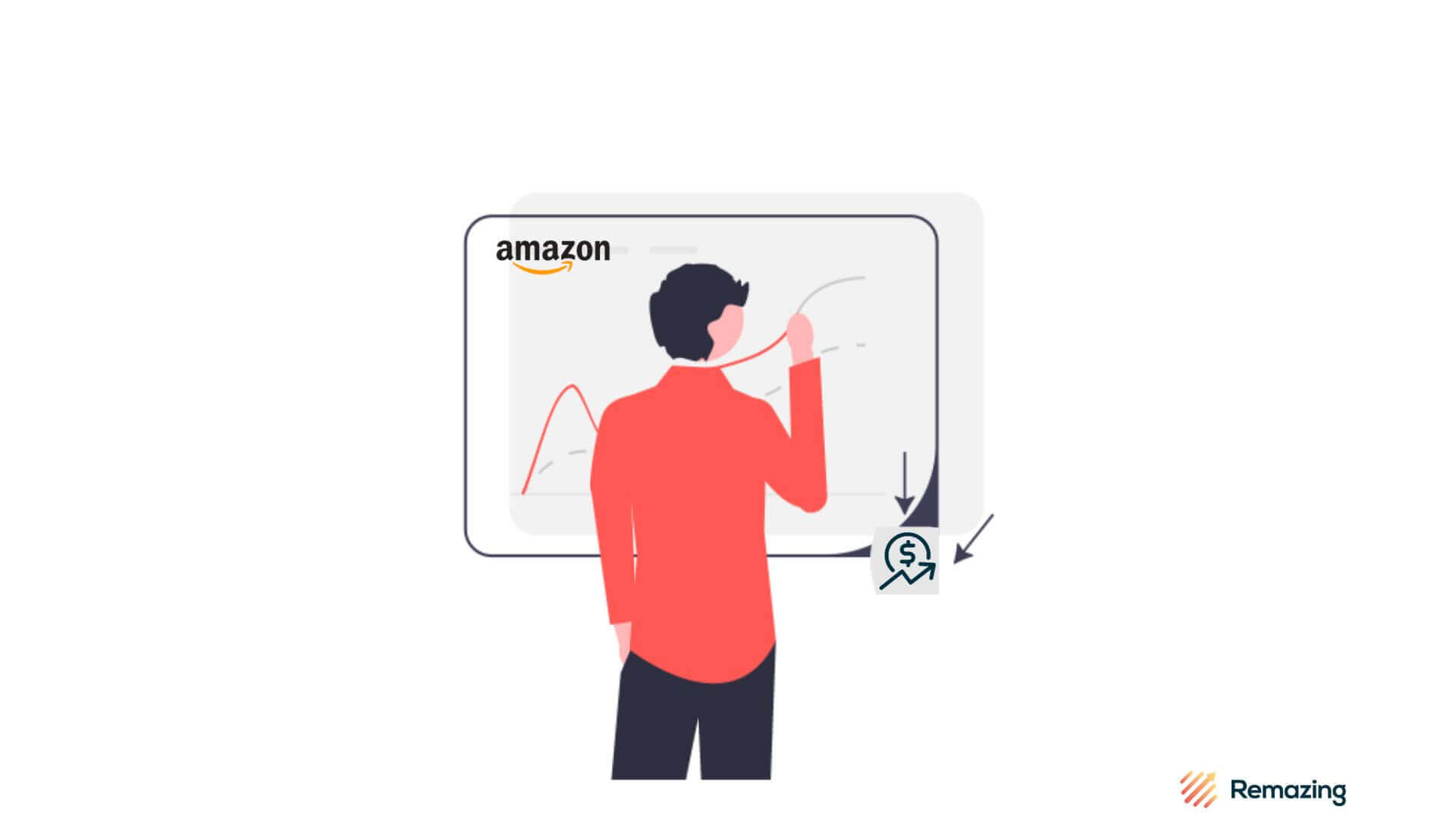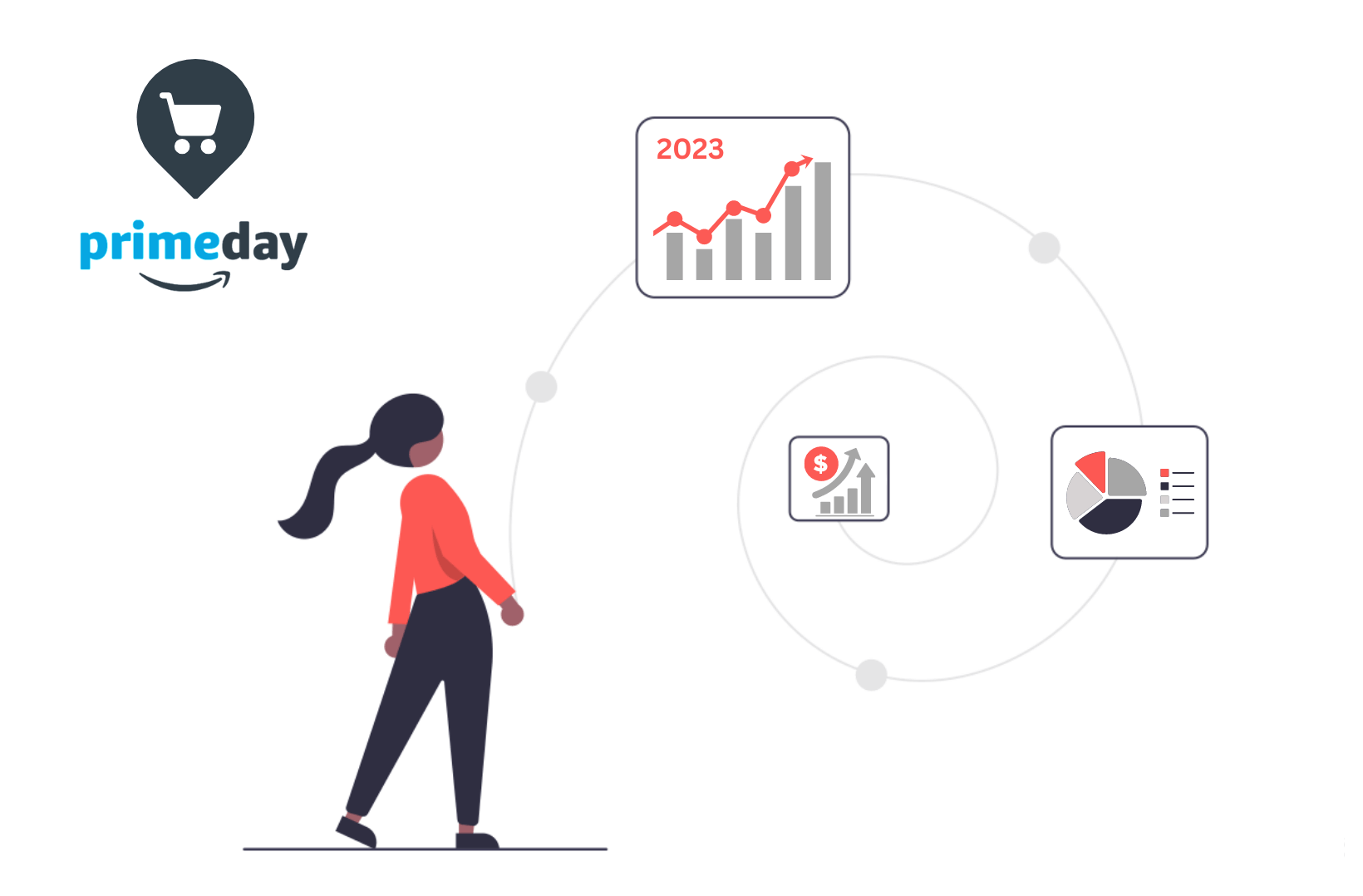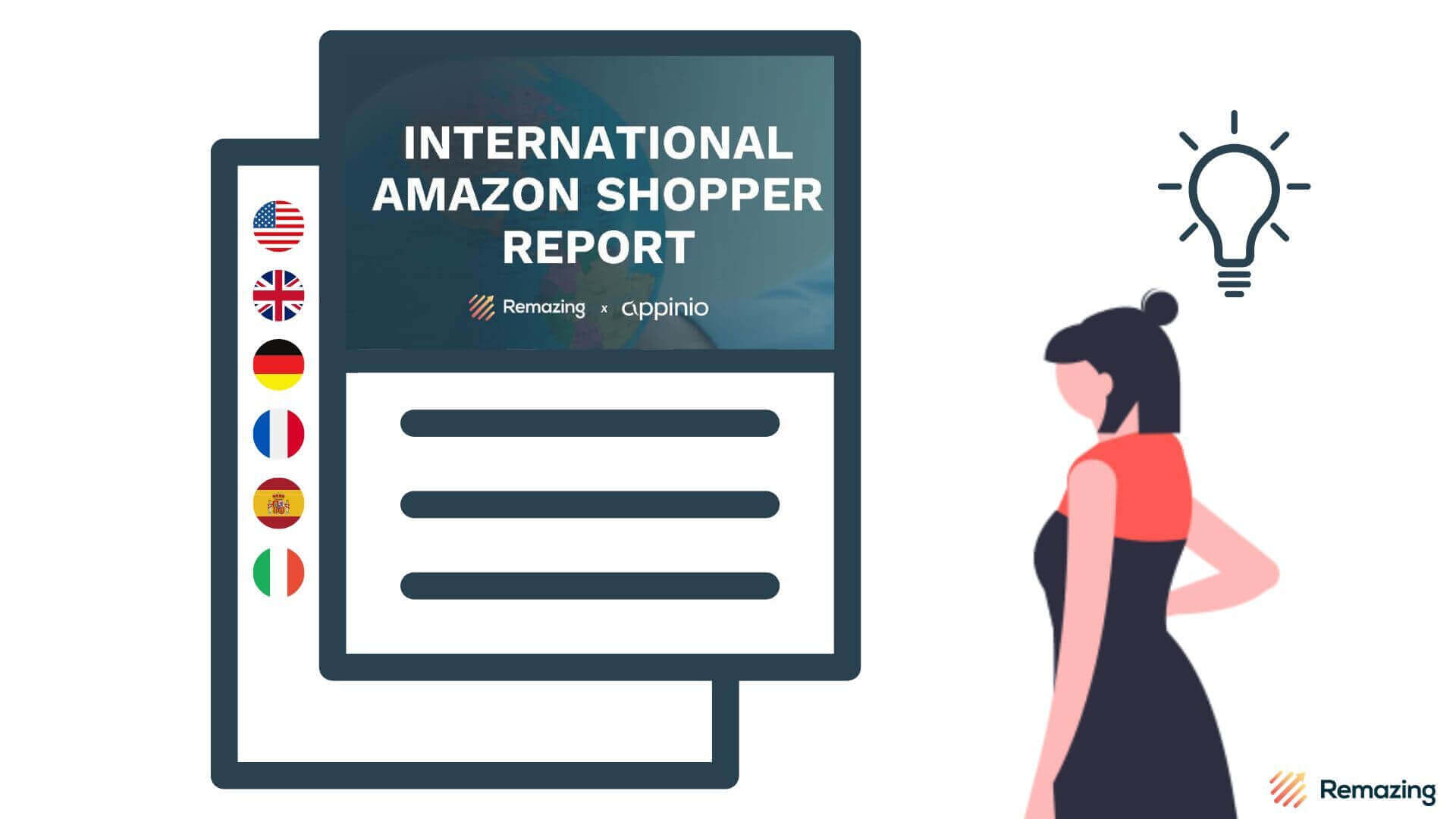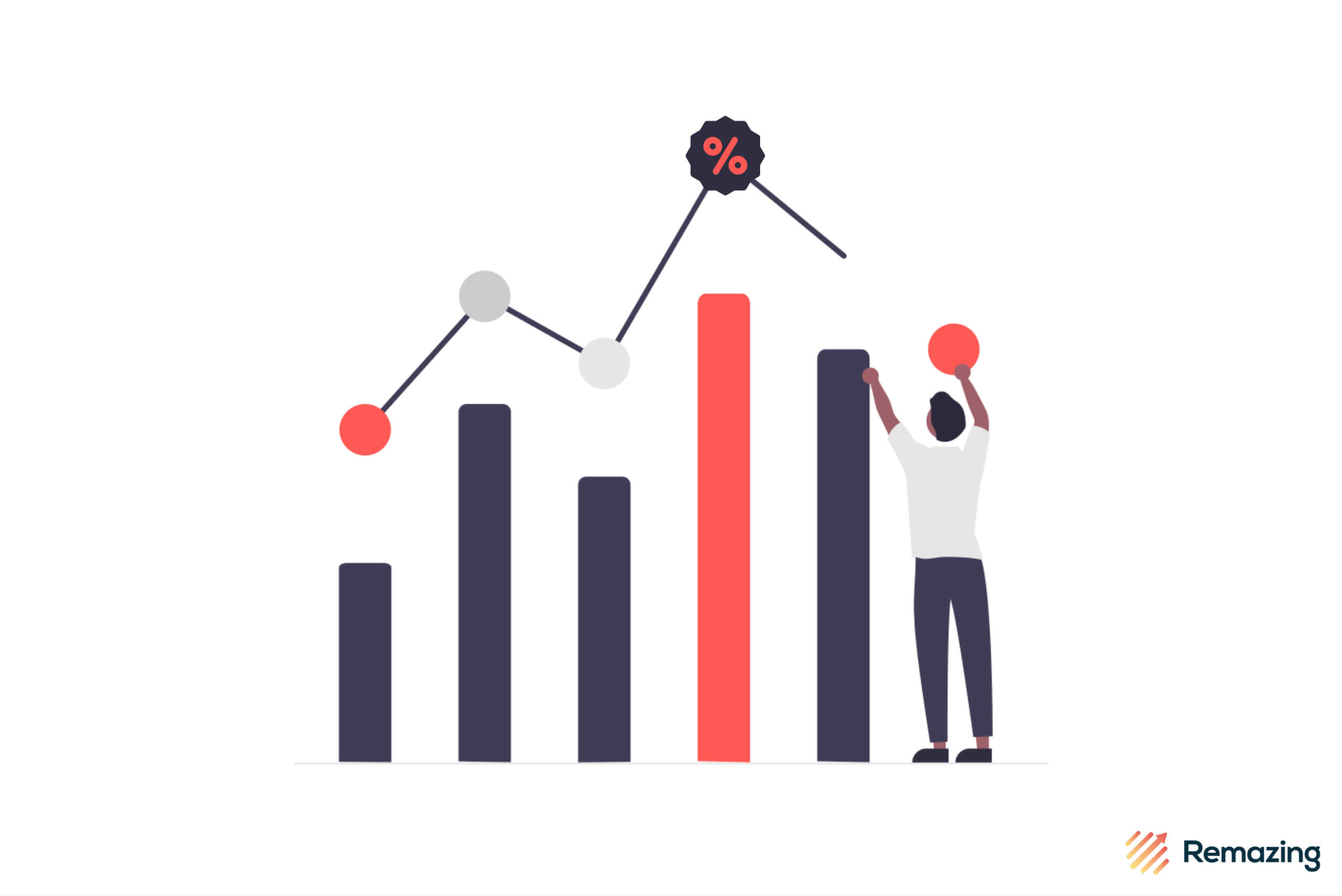
Analysis: Amazon Black Friday 2021

More deals than ever before were expected on Amazon’s Black Friday this year. In addition, the sales started earlier than usual with early Black Deals.
We analyzed Black Friday 2021 on Amazon with the help of our tool Remdash. The analysis was based on 21,000 products of all categories on the European core markets (Germany, UK, France, Italy, Spain).
The reference for all figures mentioned is the performance on an average day in week 44 – 45 (Nov 01 – 14), the two weeks before the Early Black Week. From the sales of the individual days in this week, we have formed an average value, to which we refer in the following analysis – unless otherwise noted.
Sales development on Black Friday 2021
First, we looked at the change in sales across all Amazon marketplaces during the Black Friday weeks on a daily and weekly basis.
The increase in sales on Amazon started as early as the launch of the Early Black Friday Deals on November 19, 2021: sales increased by + 62% on that day.
At + 53%, sales for the entire Black Week (Nov 22 – Nov 28) increased significantly compared to the average for Weeks 44 + 45. As expected, Black Friday (Nov 26) was the highlight of Black Week, with sales up 138%.
Cyber Monday (Nov 29), on the other hand, was a comparatively weak conclusion to the deal event: sales rose by only 42%, while Cyber Week as a whole still achieved a plus of 15%.
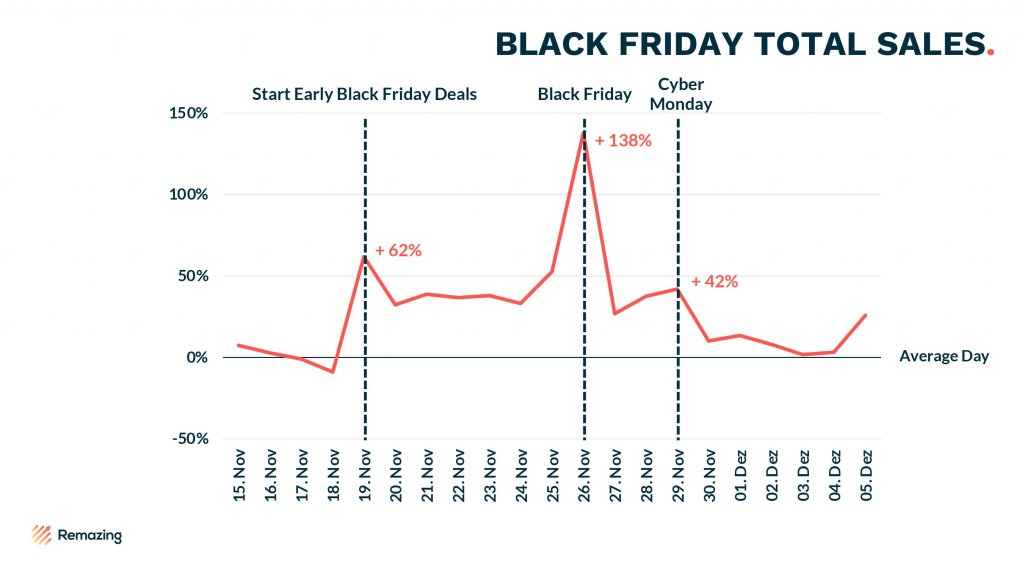
Compared to the previous year, Black Week on Amazon 2021 was more successful in terms of sales increase: In 2020, the sales increase compared to the previous week was 51% (vs. 67% in 2021). It should be noted here, however, that the performance of Black Friday 2020 was influenced by Prime Day a few weeks earlier.
Deal vs. no deal
We wanted to find out how well deals performed on Amazon during the Black Friday period – or whether there was no need to run deals at all. For this purpose, we define deals as all ASINs that had a deal at some point on the given day.
Here, too, we compared the sales of the deal and no-deal ASINs with the value of an average day with or without a deal in weeks 44 – 45.
Comparing weeks, products with deals brought a much larger increase in sales than products without deals:
- + 78% sales in Early Black Week (vs. + 7% for products without deals)
- + 112% sales in Black Week (vs. + 39% for products without deals)
Cyber Week is an exception. Here, ASINs without deals caused a larger increase in sales than ASINs with deals:
- + 17% revenue in Cyber Week without deals (vs. + 5% with deals)
This development can be explained by the fact that it has been learned that the best offers take place on Black Friday and Cyber Monday at the latest – after that, the bargain hunting is over from the customer’s point of view. Our recommendation, therefore, is to place deals earlier in the Black Friday period rather than at the very end.
The good performance of deal products in Early Black Week is largely due to Early Black Friday:
- + 210% sales (vs. + 20% without deals)
As expected, Black Friday was the deal highlight of the week. Products without deals also benefited massively from the increased traffic on the platform on this day:
- + 229% sales with deals
- + 114% sales without deals
On Cyber Monday, as expected, products with deals also performed better than products without deals:
- + 59% revenue with deals
- + 39% sales without deals
The increase in sales for deal ASINs is only slightly above the average for the entire Black Week.
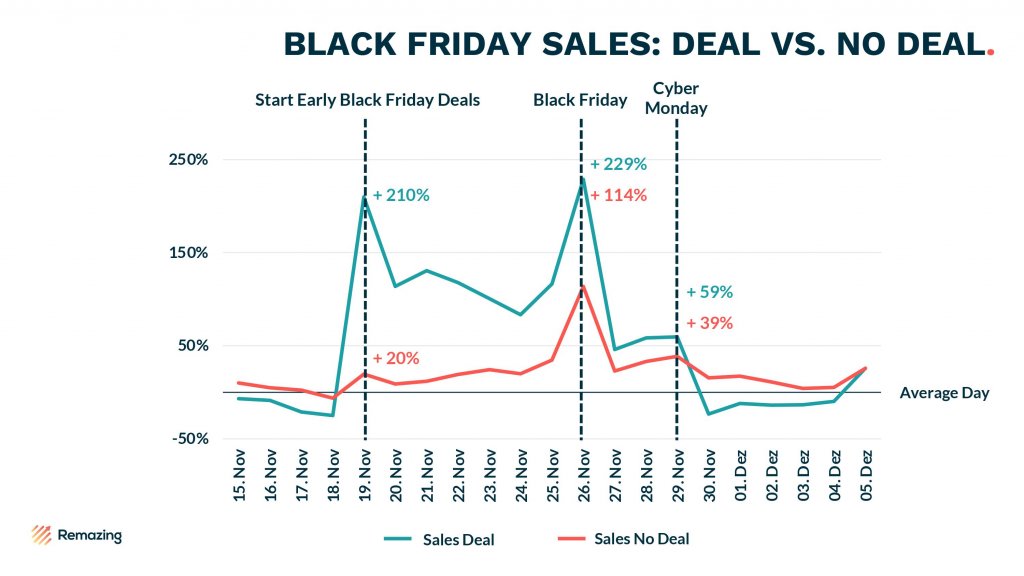
As expected, it turns out that customers were strongly focused on deals around Black Friday.
In addition, a very early rush for offers can be observed this year: The strong peak already one week before Black Friday, at the start of the Early Deals, can probably be explained by the current supply problems. Since they feared “out of stock” problems, many customers probably bought directly at the beginning of the deals and did not wait for possibly even better offers.
Cyber Monday was accordingly rather weak compared to the very high sales level of Black Week.
Two days in focus: Early Black Friday & Black Friday
Overall, two individual days around Black Friday on Amazon stand out strongly: the start of the Early Black Friday Deals (19.11.) and Black Friday itself.

Subscribe to our newsletter now and receive regular updates on Amazon and other online marketplaces.
Subscribe to the newsletter now.
The two days each accounted for the largest share of weekly sales – nearly a quarter:
- 21% of weekly sales on Early Black Friday
- 24% of weekly sales on Black Friday
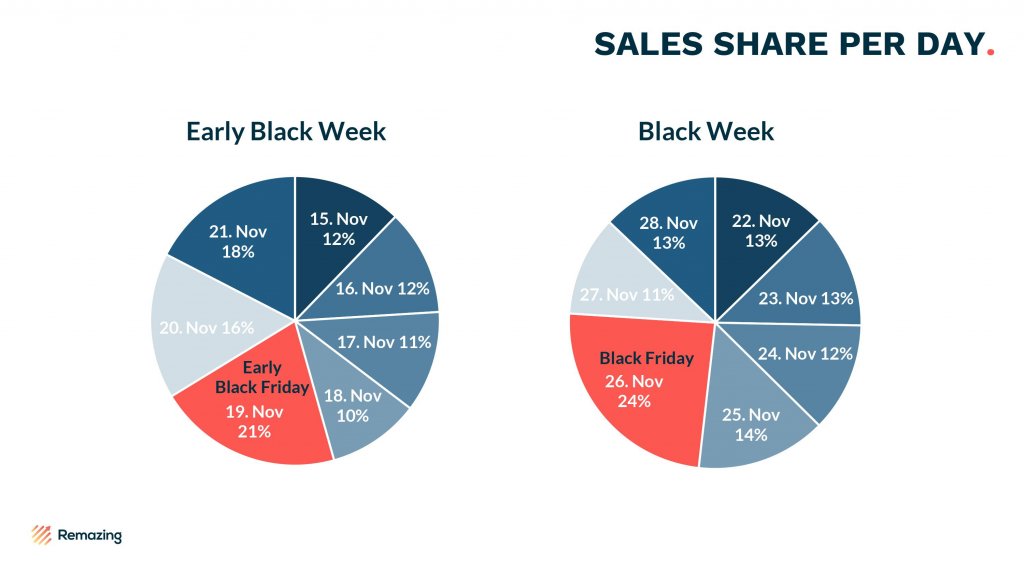
Mainly on Early Black Friday and Black Friday, traffic on the platform was strongly increased:
- + 63% Glance Views on Early Black Friday (vs. + 21% in the entire Early Black Week)
- + 73% Glance Views on Black Friday (vs. + 42% in the entire Black Week)
The conversion rate was also stronger on both days, but especially on Black Friday, than the average for the entire week in each case:
- + 7% CR on Early Black Friday (vs. + 3% in the entire Early Black Week)
- + 9% CR on Black Friday (vs. + 0% in the entire Black Week)
Amazon Advertising on Black Friday 2021
Advertising generated an 18% increase in revenue in our sample during Early Black Week, and 32% more revenue during Black Week than in weeks 44 and 45. Ad Spend was 21% higher than average during Early Black Week, and increased 69% during Black Week. The ACoS deteriorated by 3% in Early Black Week and quite strongly by 33% in Black Week.
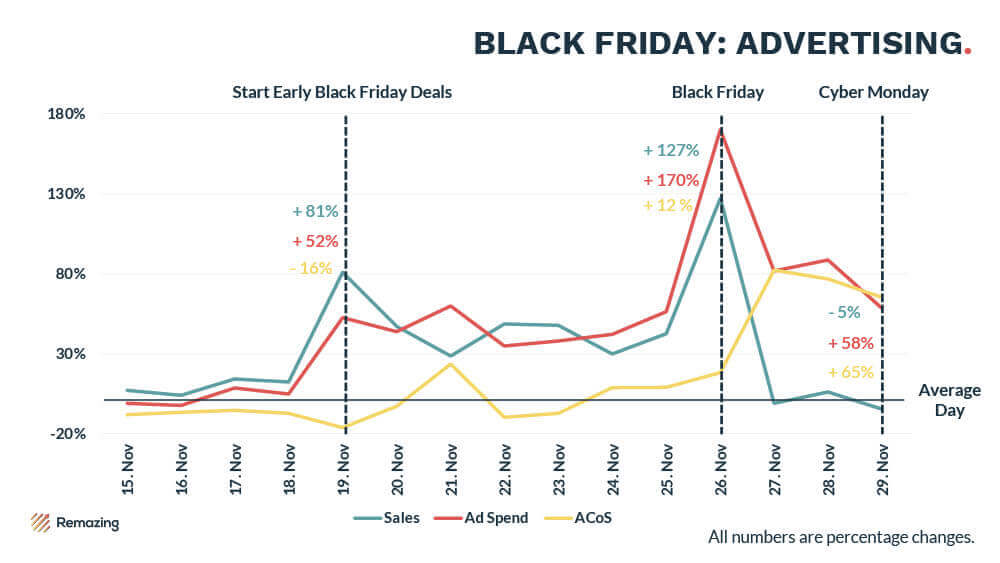
Just as with total sales, advertising on Black Friday accounted for almost a quarter of total sales for the week (23%), for which 22% of weekly advertising costs were spent. On Early Black Friday, it was 20% of weekly sales with 18% of weekly costs.
Cyber Monday is also the weakest deal day in advertising: advertising spend was 58% higher than on a normal day, but 5% fewer sales were generated. The best deal day from an advertising perspective was Early Black Friday. Right at the start of the deal period, 81% more revenue was generated on this day with 52% more ad spend than on an average day.
The average CPC increased by 8% from €0.41 to €0.44 in the data we looked at during Early Black Week. During Black Week, the click was 33% more expensive than in cw 44 and 45, peaking at 0.64€ on Black Friday. Subsequently, the CPC settled at an increased level and was 0.56€ on Cyber Monday.
By comparison, on Prime Day 2021 in June, the price per click was €0.71, 39% higher than in the previous period.
The investment in ads was worthwhile this year up to and including Black Friday. Early Black Friday also turned out to be the most favorable day for advertising, while ad performance on Cyber Monday was rather weak.
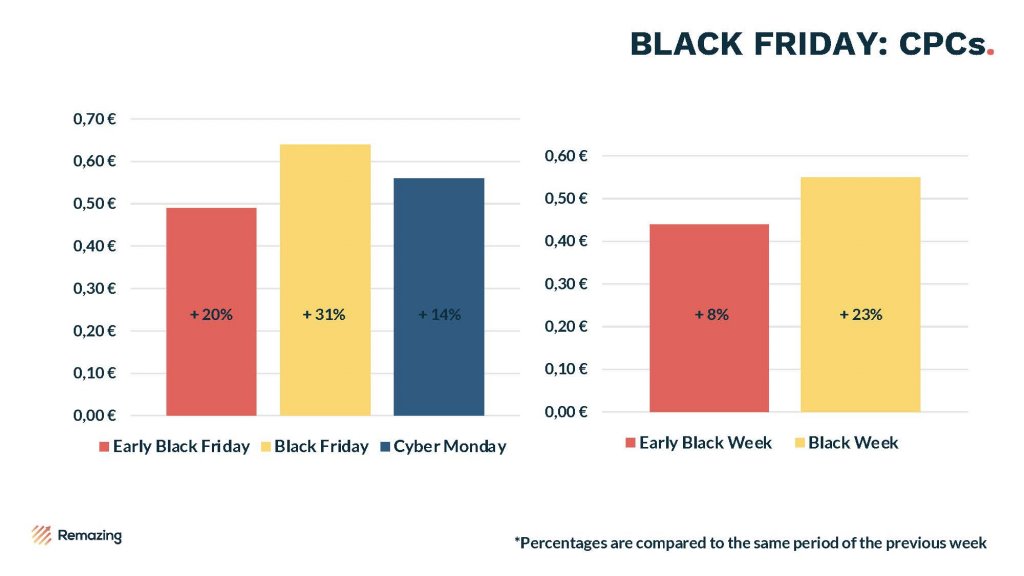
Conclusion: Overall successful Black Friday 2021
Overall, the Black Friday performance on Amazon was good. Some brands, especially from the apparel category, reached their sales targets before the end of Black Week. The increase in sales via deals worked very well – customers are primarily on the lookout for deals around Black Friday. In addition, the brands that had placed deals on some products also benefited from the products without deals. Advertising costs and average CPCs rose sharply, as expected, due to the strong competition on Amazon.
Sales were very strong especially on Early Black Friday and Black Friday itself. If the offers are spread over a fairly long period of time, as was the case this year, it pays to place deals and advertising right at the beginning of the sales event.
From the 5 biggest learnings of our analysis, we have derived recommendations for the next Black Friday:
- Early Black Friday proved to be the strongest day in the deal period after Black Friday itself. The overall sales increase was 62% (vs. 138% on Black Friday), and for products with deals even 210% (vs. 229% on Black Friday). Despite the overall very long offer period from 11/19 – 11/29/21 and the resulting increased level of sales, the performance of the two Fridays stood out once again.
Our recommendation: Focus more on the main deal days Black Friday and Early Black Friday.
- Cyber Monday 2021, on the other hand, was comparatively weak: sales increased by “only” 42% compared to an average day.
Our recommendation: Place offers rather early in the deal period – instead of Cyber Monday, rather on Early Black Friday.
- Products without deals also benefited from Black Friday: Their sales increased about half as much on Black Friday (+ 114%) as the sales of deal ASINs (+ 229%). Presumably, customers bought items without a special offer in addition to Black Friday deals.
Our recommendation: Be prepared for more purchases of products without deals – and make these products visible in the A+ content, for example.
- Advertising achieved the best results up to and including Black Friday; here, too, sales were concentrated on the two individual days of Early Black Friday (+ 81%) and Black Friday (+ 127%). ACoS was best on Early Black Friday (- 16%) and worst on Cyber Monday (+ 65%).
Our recommendation: A higher investment in ads is worthwhile especially up to and including Black Friday. Additional sales can be purchased most favorably especially on Early Black Friday.
- The results of Black Friday 2021 compared to the previous year are not as disappointing as currently often reported (sales in Black Week + 67% in 2021 vs. + 51% in 2020) – however, Black Friday 2020 was influenced by Prime Day shortly before.
Our recommendation: Black Friday remains a very relevant deal event on Amazon that brands should definitely participate in.
Are you interested in an expert analysis of your Amazon account?
Request free analysisRelated articles
Remazing GmbH
Brandstwiete 1
20457 Hamburg
©Remazing GmbH
